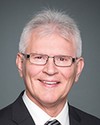That's a great question.
As a scientist, I'm trained to identify problems and inform solutions. In my view, the solutions come from the private sector that designs and produces products and looks at the life cycle of that product, at the procurement and design of that product. Our intended target is also the general public: to improve consumer education and look at better recycling. I think an EPR national recycling framework would go a long way to reducing the complexity, and we heard about that from other witnesses today.
It's not our intent to preach. We're looking at the ocean and we're identifying issues in the ocean. We're identifying problems pertaining to microplastics and plastics. We're trying to use the best available science and innovation to track that back to source.
I think the basic discovery or curiosity that's driving our understanding of the problem is contributing to that team effort and allowing multiple players. I would point to our microfibre partnership with apparel retailers that we're working very closely with. They are very supportive of understanding the nature and scale of this problem. They were not aware of the issue in the past, and they would like to use a better awareness of that problem to inform their material design, procurement, life-cycle analysis, etc.
I'll simply end by saying that recycling must improve and can improve. There is an issue, because we always face leakage. We want to improve recycling, improve recyclability, but we always face a leakage.
I look at our great Canadian shoreline data from a couple of years ago, and 17,654 straws were found on Canadian beaches. That's a tiny amount of what actually went into the environment. There were 50,285 plastic beverage bottles, and 22,724 plastic bags. This is not done by people deliberately throwing these things out.
We need better recycling and more informed consumers. There is always going to be leakage, and that's a big concern of ours. At the end of the day, those seals, sea lions, turtles, albatross, baby salmon, zooplankton and beluga whales, and the traditional food for indigenous communities, are the things we have to use as a metric. That's not just semantic or goal-oriented. We need positive metrics.
We have to use those numbers and those risks to inform and strengthen our solutions—as I put it to you earlier—as a team. Plastics are in every one of our lives.





